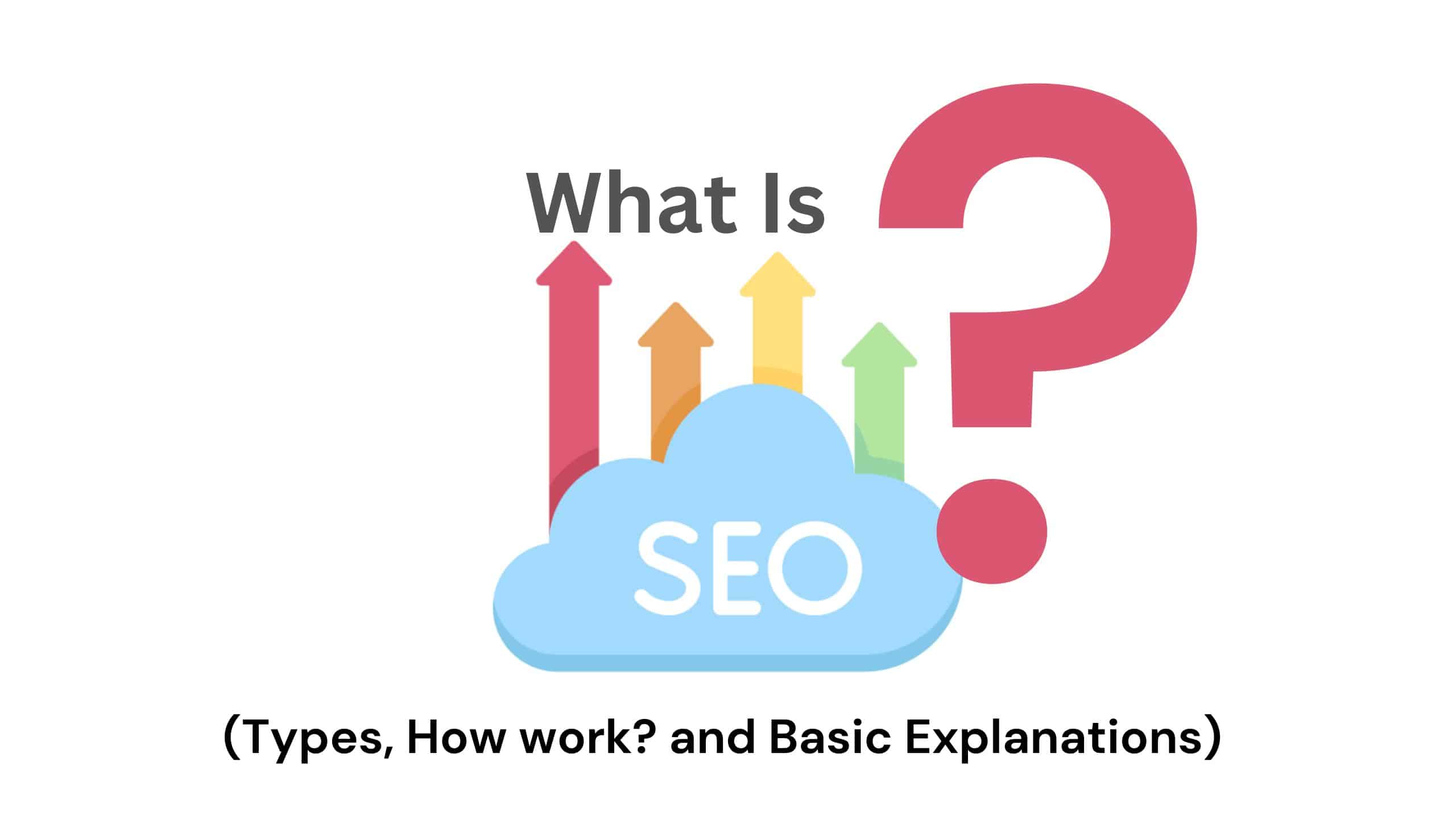What is SEO?
SEO is the practice of optimizing a website and its content to improve its visibility and ranking in search engine results pages (SERPs). By optimizing your website, you can attract more organic traffic, increase your online visibility, and drive more leads and sales for your business.
How search engines work ?
Before we dive into the specifics of SEO, it’s important to understand how search engines work. When someone enters a search query into a search engine, the search engine uses a complex algorithm to determine which web pages are the most relevant and useful for that query.
The algorithm takes into account various factors, including the content on the page, the website’s authority and relevance, the user’s location, and other factors. The search engine then ranks the web pages based on these factors and presents the results to the user.
The importance of SEO ?
SEO is important for a number of reasons. First and foremost, it helps you attract more organic traffic to your website. Organic traffic refers to the visitors who come to your site through unpaid search results. By improving your search engine ranking, you can attract more organic traffic and increase your online visibility.
SEO is also important because it helps you build trust and credibility with your target audience. When your website appears at the top of search engine results pages, it signals to users that your website is a valuable resource and that your business is authoritative and trustworthy.
Types of SEO
There are three main types of SEO: on-page optimization, off-page optimization, and technical SEO. Let’s take a closer look at each of these types.
1. On-page optimization
On-page optimization refers to the process of optimizing the content on your website to make it more relevant and useful to search engines and users. This includes optimizing your website’s content, meta tags, images, and other elements to make them more relevant to your target keywords.
Some key on-page optimization techniques include:
- Optimizing your website’s title tags and meta descriptions to include your target keywords and provide a clear description of your content
- Using header tags (H1, H2, H3, etc.) to structure your content and make it easier to read
- Using your target keywords throughout your content in a natural and informative way
- Optimizing your images by compressing them, adding alt text, and using descriptive filenames
- Creating high-quality, informative, and engaging content that provides value to your target audience
2. Off-page optimization
Off-page optimization refers to the process of building backlinks to your website from other high-quality websites. Backlinks signal to search engines that your website is a valuable resource and improve its authority and relevance.
Some key off-page optimization techniques include:
- Building high-quality backlinks from other websites through outreach, guest blogging, and other link building strategies
- Creating shareable content that encourages others to link back to your website
- Participating in online communities and forums to build relationships and earn backlinks
- Monitoring and managing your online reputation to ensure that other websites are linking to your website in a positive way
3. Technical SEO
Technical SEO refers to the process of optimizing the technical aspects of your website to improve its crawlability, indexability, and overall performance. This includes optimizing your website’s structure, speed, mobile-friendliness, and other technical elements that affect its ability to rank well in search engine results pages.
Some key technical SEO techniques include:
- Optimizing your website’s structure to make it easy for search engines to crawl and index your pages
- Ensuring that your website is mobile-friendly and optimized for different devices
- Improving your website’s page speed by optimizing images, reducing file sizes, and minimizing code
- Using structured data markup to provide additional context and information to search engines
- Implementing HTTPS to provide a secure browsing experience for your users
Local SEO
Local SEO refers to the process of optimizing a website for local search results. This includes optimizing your website and content to appear in local search results, building local citations, and optimizing your Google My Business profile.
Some key local SEO techniques include:
- Optimizing your website’s content for local keywords and phrases
- Building local citations by getting your business listed in local directories and other online directories
- Optimizing your Google My Business profile by adding photos, responding to reviews, and updating your information
E-commerce SEO
E-commerce SEO refers to the process of optimizing an e-commerce website for search engines. This includes optimizing product pages, category pages, and other e-commerce pages to improve their visibility and ranking in search engine results pages.
Some key e-commerce SEO techniques include:
- Optimizing product pages by adding unique product descriptions, images, and customer reviews
- Creating optimized category pages that group related products together
- Improving the user experience by making it easy to find products, checkout, and navigate the website
- Using schema markup to provide additional context and information about your products
International SEO
International SEO refers to the process of optimizing a website for international search results. This includes optimizing your website and content for different languages and regions, and building backlinks from other international websites.
Some key international SEO techniques include:
- Creating content in different languages and optimizing it for different regions and cultures
- Building backlinks from other international websites to improve your website’s authority and relevance in different regions
- Using hreflang tags to indicate the language and region of your content to search engines
Voice search optimization
Voice search optimization refers to the process of optimizing a website and its content to appear in voice search results. This includes optimizing your content for natural language queries and making it easy for voice assistants to find and read your content.
Some key voice search optimization techniques include:
- Optimizing your content for long-tail keywords and natural language queries
- Creating content in a conversational tone that’s easy for voice assistants to read
- Structuring your content in a way that makes it easy for voice assistants to find the information they need
Mobile SEO
Mobile SEO refers to the process of optimizing a website and its content for mobile devices. This includes making sure that your website is mobile-friendly and that its content is optimized for smaller screens and touch-based navigation.
Some key mobile SEO techniques include:
- Using responsive design to ensure that your website looks and performs well on different devices and screen sizes
- Optimizing your content for smaller screens by using shorter paragraphs, larger fonts, and simpler navigation
- Reducing page load times to improve the user experience on mobile devices
SEO Tools
There are numerous SEO tools available to help you with keyword research, on-page optimization, link building, and other aspects of SEO. Some of the most popular SEO tools include:
- Google Analytics: A free tool that provides detailed insights into your website’s traffic, user behavior, and other metrics.
- Google Search Console: A free tool that helps you monitor and optimize your website’s performance in Google search results.
- SEMrush: A paid tool that provides a wide range of SEO and digital marketing insights, including keyword research, site audits, and competitor analysis.
- Ahrefs: A paid tool that offers advanced features for backlink analysis, keyword research, and competitor research.
- Moz: A paid tool that offers a suite of SEO tools, including keyword research, site audits, and link building tools.
SEO is a complex and ever-evolving field that requires ongoing effort and optimization to achieve and maintain high search engine rankings.
By understanding the key principles of SEO and using a variety of on-page, off-page, technical, and local optimization techniques, you can improve your website’s visibility, attract more organic traffic, and achieve your digital marketing goals.
Additionally, by keeping up with the latest SEO trends and best practices, and using SEO tools to measure your results and identify opportunities for improvement, you can stay ahead of the competition and achieve long-term success in the search engine rankings.




